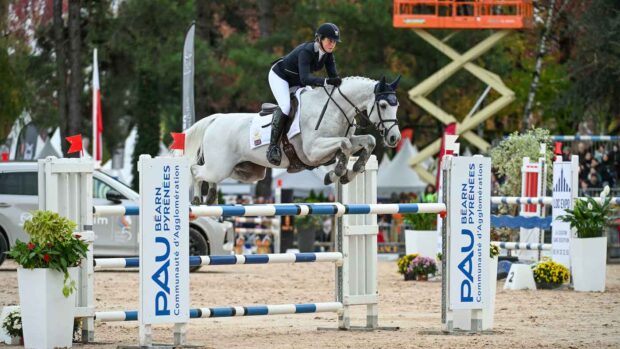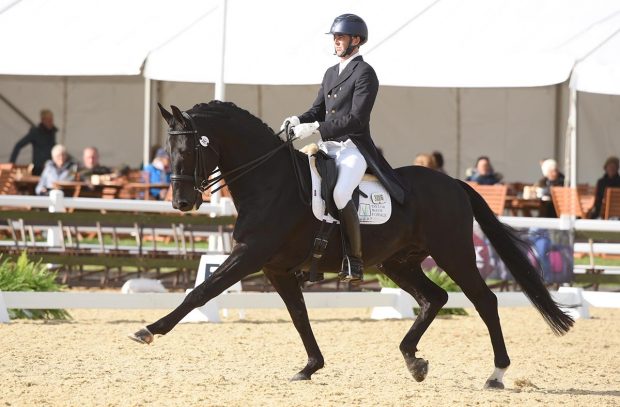In this series of articles, Francesca Newman shares the highs and lows of her first-time journey to get her stallion licensed for breeding in Germany
After a nerve-wracking final two days of the German 50-day stallion testing procedure, it was time to find out what the judges thought of my stallion, Velvet Dancer (Peanuts).
Peanuts did very well in the testing, scoring nines for his conformation, character/temperament, and willingness to perform as well as receiving a 9.5 from the final test rider.
He passed the 50-day test and was shortly afterwards licensed to the Westfalian Verband.
The judges admired his temperament, while the test rider highly rated his rideability, and declared that he was a horse for the top end of sport — reinforcing what Leanne had told me all that time ago.
However, they said he is a very big horse, and needed the time to mature, to start showing his elasticity with more development and balance.
I felt a mixture of emotions: elation that he had passed, delighted that they agreed with my prediction for Peanuts (that he would be a top sport horse), so proud for Reiner (Peanuts’ breeder, that he had bred another licensed stallion) — but also a little disappointed.
I had expected a system that judged the horses on their merit, and took all external factors out of the equation. I was so excited to be a part of this fabulous German process, but it left me somewhat deflated by the realisation that it’s not always the case.
I now have two other young stallions and both are kept in Germany with Christian Baune. This time I will license them before the test as it seemed this was more acceptable to the judges.
However, it makes sense that only tested horses should really be licensed and allowed to be used for breeding. Maybe the rules will change again…
Overall I found the process confusing, the lack of information was utterly frustrating. I found myself permanently saying “I don’t know” when asked about how Peanuts was doing and what his next steps would be.
I was also competing as a ‘nobody’ in a very ‘closed’ society, and did not always feel the horses were being judged on their merit, but rather on who they were owned by.
It is an awful lot of pressure and work to put a four-year-old horse under, and I am glad I sent Peanuts as an older horse.
However, I did my research well, and found a trainer that really cares about the welfare of the horse above the success of results.
I now have a beautifully-produced horse who has been well prepared for his competitive life ahead. It takes a long time and a lot of money, but for the horse I now have, it is worth every penny.
Velvet Dancer is now standing in Germany, with fresh and frozen semen available from the Pferdeklinik Muhlen.
He is in training with a young rider on the German team, Bianca Nowag. He is with her to follow a competition career and to see how he develops as a sport horse.
Follow Francesca’s journey:
My stallion licensing adventure: the 50-day test
My stallion licensing adventure: an embarrassing phone call
My stallion licensing adventure: choosing the right trainer
My stallion licensing adventure: Francesca Newman and Velvet Dancer (aka Peanuts)
Would I do this again? I want to produce horses for big sport and for the long-term. Many of those horses at the licensing won’t necessarily be sustainable as competition horses, and I think to breed top sport horses you need a parentage that has shown ability at the top of sport.
I would think very carefully about putting your horse through that process and what you want to achieve from doing it.
I would also recommend owners to be less idealistic than I was. Next time — if there is one — I will be wearing a more realistic cap!



